#yoshida district
Text
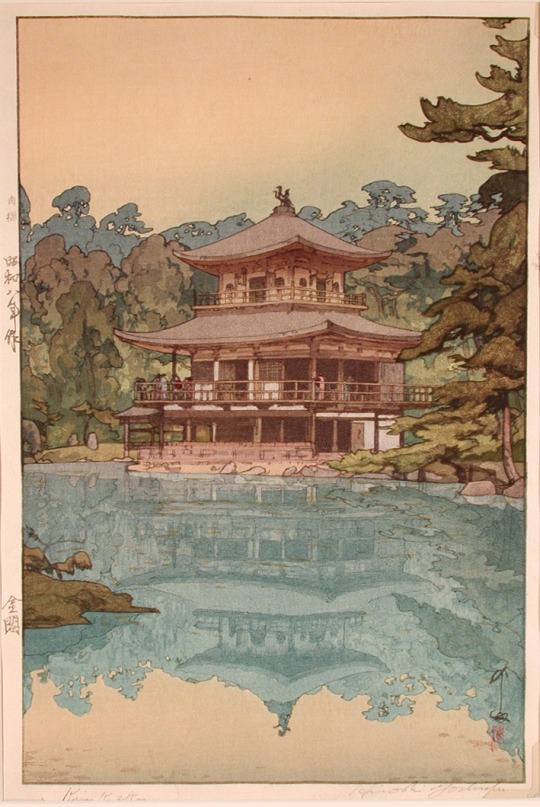
Hiroshi Yoshida
The Golden Pavilion
Series Title: Kansai District, 1933
#hiroshi yoshida#yoshida hiroshi#japanese art#woodblock print#ukiyoe#color woodblock#japanese#woodcut#I think I have a different scan of this up#but sometimes two scans are better
389 notes
·
View notes
Text
Mafia AU: Stray Kids -
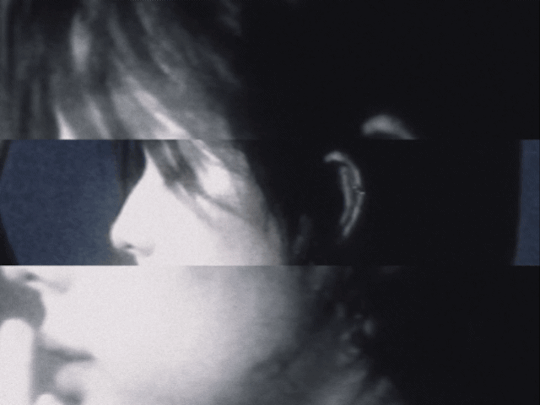
Chapter 1: Rough Start
You were running from people, a vendor you had stolen food from as a desperate attempt to survive, you hadn't eaten since you left your apartment, which was weeks ago. Now here you were, feeding on scraps and stealing food just to keep your body distracted from the sickness that was fogging your mind. Your body might've been occupied, but your brain kept playing that scene in your head like a broken record.
You held on to the rickety metal pole that passed as railing on the concrete stairs to the apartment you shared with your boyfriend, 143-District 9. It reeked of tobacco, but an unfamiliar sound filled your ears 'It's just the neighbors, fucking, again' you rolled your eyes at the noise, reassuring yourself that your boyfriend would never cheat on you. But as you unlocked the door, that noise became louder, and that's when the truth hit you like a ton of bricks...
(Like and follow for more!)
Hello! this is a collab series with @qwqqmfh! Please note that this is just a preview and that more content will be on the way soon! Faith will be making all of the images at the heading of every chapter in this series, so a big shoutout to her!
Tag list is OPEN!:
@calumpartridge1996 @flyawaybird444
@vulgarmaw
@ka0ila
@yoshida-chiyo
@mikasaackerman728
@foxinnie8
@hyunlixwife
@hey-i-really-miss-you
@stray-kid-felix98
@jarkinesbrainstew
@mikeymadisonispretty
@thicccurls
@skz3-batfamily
@strvystvrlightt
@kaiso-woo
@hyunjinvoid
@atinyniki
@onlychanz @jetblackbelle @xx3rachaslutxx @isakkaye @im-lost-please-help
@skz-lover21 @kpopandmusicpassion@ilovefelixandhyunjinnotyou
@lixiesunshine143@sharonxdevi @z1faa @bunnnnycat@betweensupernovasandstars @bigolheythere@missnea@qwqqmfh@turtledove824@kja1292@cupkiki@staytinyzen0
@d4n1k9@mylani3110@kawaiitastemakernight152@channiesmegaverse@palindrome969 @scuzmunkie@rylea08
#stray kids#jyp stray kids#skz fluff#stray kids fluff#bang chan#hyunjin#han jisung#hwang hyunjin#changbin#skz mafia au#9th member of skz#9th member of stray kids#fic preview#my fanfic#fanfiction#fan fic#skz x reader#stray kids x you#skz imagines#stray kids imagines#skz scenarios#collab fic#qwqqmfh#hwang hyunjin x reader#hyunjin x reader#seungmin#jeongin#lee know
88 notes
·
View notes
Text


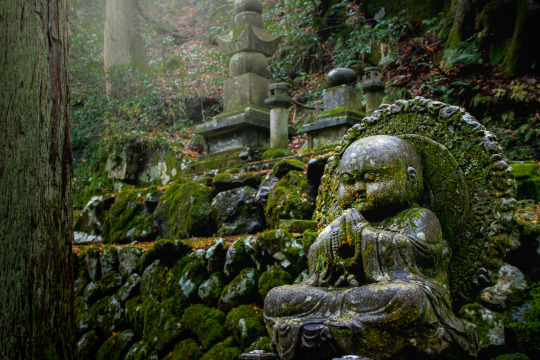

Going back to a damp day at the magnificent Daihonzan Eiheiji temple on the forest covered mountain slopes of the Yoshida district of Fukui Prefecture.
Eiheiji is as magnificent as it is serious about the practice of the Soto school of Zen Buddhism of which it is one of the most important temples in Japan.
These images were taken in the outer reaches of the temple grounds.
#japan blogs#asia#travel#life in japan#japan#japanese culture#japantrip#fukui#temples#insp#travel inspo#tumblr japan#photographers on tumblr
246 notes
·
View notes
Text
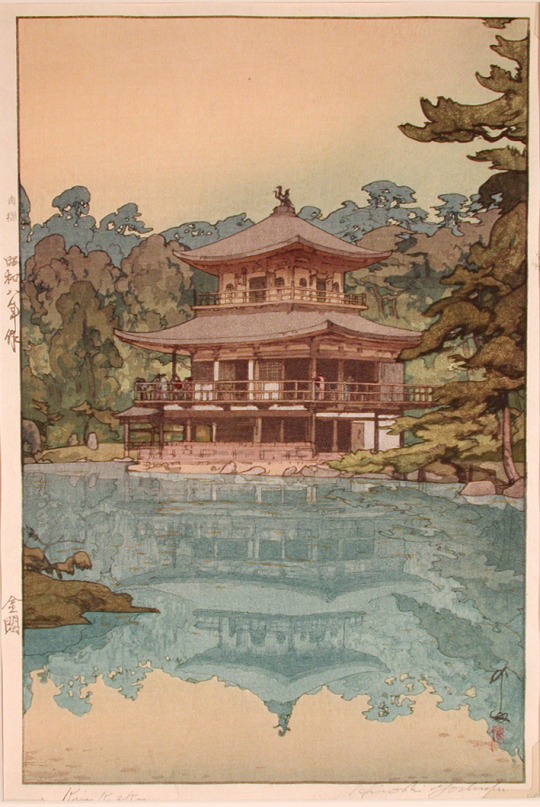
The Golden Pavilion (from the series Kansai District), Hiroshi Yoshida, 1933
#art#art history#Asian art#Japan#Japanese art#East Asia#East Asian art#shin-hanga#woodblock print#landscape#Hiroshi Yoshida#Yoshida Hiroshi#Showa period#Showa era#20th century art#San Diego Museum of Art
372 notes
·
View notes
Photo
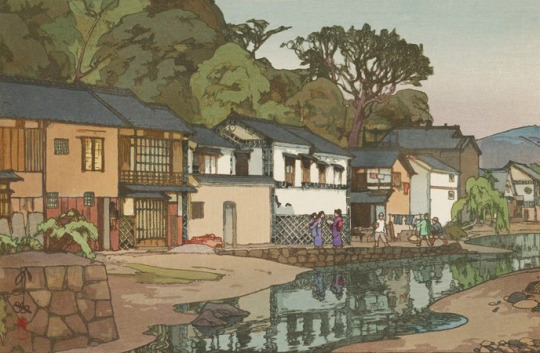
Hiroshi Yoshida: Small Town in Chūgoku District, 1933
254 notes
·
View notes
Note
You write a lot of characters from very diverse backgrounds (the Pax kids, Calex, Euna and Joey, etc) but you still manage to include details from their cultures that really show their connection to it. What kind of research do you do to be able to represent them well?
THANK YOU FOR YOUR ASK ANON!
*cries with relief that you're asking this instead of asking me why I'm so bad at it*
I am terrified of misrepresenting cultures. Someone I informally use as a sensitivity reader has told me that I overthink this. I screw up. A lot. Cultures can alter drastically depending on the geography and time frame. Sometimes I can't find anything on certain ethnic groups and other times I'm scared of misappropriating something. The last thing I want to do is hurt someone with how I portray something. But, I really want to have a diverse group that can connect with a lot of people, and would rather me told when I make mistakes so i can correct them, then not try.
Short answer: asking millions of questions and doing dumb amounts of research that STILL won't be enough.
Long-winded answer is below.
Where I... cheat? (Can skip to see where I don't)
Euna, Joey
I used to date a woman who is Korean, have two friends who went to teach in Korea, and live beside one of the biggest Korean immigration points in my country. Many a shopkeep has made fun of how bad my accent is when I try a little, "감사합니다," as I offer my payment with my right hand, left hand touching my elbow.
Korean culture is the only culture, so far, where I had someone speak out against how I represented a facet. I debated on altering the scene, and spoke with three cultural informants about this who said it was fine. However, it is something I am altering in the remake of the series that will ONE DAY happen.
Hiro, Yoshida
I have a friend who taught in Japan for a long time and speaks fluent Japanese. He's been an invaluable aid for both of them!
Flynn
I took Mandarin and college and had a VERY patient professor with my millions of questions. Also, I had a Cantonese friend who could give me some information about how it was for his family (different region though!)
Merry, Mercedes, Zaneera (and a little bit of Calex and Lapis)
(You don't know Zaneera yet.) This is several fold. I used to love studying religions when I was younger, so that has helped. I used to tutor and I owe a great debt to the Indian family that took me in and would have proper chai and homemade meals with me. They were not from the same district as Merry. I intentionally picked an underrepresented region for Merry, since most Indians portrayed are from Northern districts. However, I feel like I haven't been able to do proper research there and have been considering picking different districts for her parents, for fear of generalizing and misrepresenting.
My sister-in-law happens to be Pakistani Muslim and most of my brothers friends are from Pakistan or India (or... randomly proud country rednecks. His parties are, um, disjointed at times.) I absolutely adore her Amma and she's very patient answering my sheepish questions about her religion and culture. My sister-in-law also used to do a lot of work in West Africa and in Egypt.
One of my friends went to Granada, Spain, and provided information on Mercedes' hometown.
Where I flail and pray I don't screw up: The Real Research
Calex
I hit the books and newspapers and blogs a lot for Calex. He's one of the hardest ones to balance out all the facets that are nothing like my life experience. And. I got him wrong version one. Very. very. very. wrong. Embarrassingly. No one called me out, but I'll call myself out right here:
The original ethnic group he's part of was the Yoruba people. THAT ETHNIC GROUP IS MOSTLY IN NIGERIA, BENIN, AND TOGO. NOT LIBERIA. THERE ARE TWO WHOLE COUNTRIES WEDGED BETWEEN LIBERIA BEFORE YOU HIT ONE OF THOSE COUNTRIES. (In my corner of ignorant shame)
I didn't want this to happen again.
For the remake, Calex's ethnic group is now the Kpelle. I have.... loads of books on the Kpelle now. But, unfortunately, most of the research I found is decades old, and written by people who aren't always friendly to Liberia as a country. (Either Europeans or African countries that historically don't get along with their far neighbors.) So, um, I subscribe to a Liberian news blog. For Calex, I needed to research, trying to be aware of bias and bigotry...
Kpelle society
Liberian society, economy, etc
the Second Liberian Civil War
Sierre Leone's Civil War (they're neighbors)
The Ebola Out Break of 2014
Racism in Britain
Football clubs in Britain
British culture and slang (according to 2014. Gods it has changed so much already)
Mixed race and religion families in Britain
Racial theory on exoticizing and fetishization of black individuals
This involved preliminary research with, honestly, kids books to get a broad, sweeping scope of things, then digging deeper with adult books, then digging into academic articles for specific information. I'm still struggling with information about Kpelle religion. In the remake, I like to read authors who are West African that eventually settled in Britain before I write Calex's point of view. Liberian Journalists are also great for this (thank you Helene Cooper!) There's SO much more information out there today, and I'm excited to hop back into researching once I'm done with TFMO!
Ajax Pax and Axel Pax
These boys.
These gd boys.
Okay, so I went to Belize. I was really lucky and fortunate that I was in a situation where I could go. And I know I still don't have everything right. I lucked into our tour guide being Maya. No one had ever asked him questions about the modern day culture, and he was so kind with all the questions that I had. I was... gods, that person on the bus. Super obnoxious. Hand going back up as soon as he had time to breathe.
Maya people are treated as second or third class citizens in Belize. Their culture was being eradicated by some of the prostheliziation happening in the area. (Okay, hear me out: modern day Catholics often don't mind melding with other religions. Check out Vodou Catholicism as a great example of this. Not all, but most Protestant religions will often stomp out localized religions when they come in. Around the time that Axel and Pax leave Belize, Protestantism is stepping in and knocking out things like the Deer Dance. Fortunately, Maya cultural groups are fighting back against this and preserving it.) Their beautiful ancient dig sites are also often plowed over and dug up to make new, fancy tourism spots for rich, predominatelywhite travelers. This is actually where some of Santiago and Frasco's character development comes in.
The only original documents I could find on Mopan Maya were in Spanish. So, uh, I started trying to learn Spanish to learn Mopan Maya. So, with the boys, I looked into....
Belizean Creole
Mopan Maya society and culture
Ancient Maya history and rituals
culture and history of Belize, how their tourism industry affects that culture
Spanish
Latin American and Caribbean drug trade (Santiago)
Racism against Indigenous populations, both in Belize and here.
Catholic school systems in Belize
Circus/performance culture, busking, and homelessness.
I also tried to consider how people interact with their culture when they've been separated from it. Being from Belize means a lot to the Pax boys' identities. However, Pax tends to lean more towards identifying as a California kid and a Camp Othrys rebel. Axel, on the other hand, feels very nostalgic for Belize and is reminded of his connection to Maya mythology every time he looks in a mirror or checks his nails. Claws. Nail-claws. Because Pax was younger when he was removed from his home culture, there is a real chance he'll start to lose the ability to speak Mopan Maya if Axel doesn't drill it into him. I have a lot of friends who can understand their home language, but lose the ability to speak it if they don't practice enough. Pax could already be falling into this.
Axel
Okay so look.
You hear, like, two things about Axel's mother. And she should be WAY BIGGER and WAY MORE OF A BADASS.
...... I couldn't find any research on her ethnic group. *hangs head in shame* I've been considering altering her culture of origin to be from somewhere that I can have more research and give her a fuller character design. I've had a wonderful person who is very patient with my book-babbling suggest Maori, since they're very open about sharing their culture.
For all of this Research
I started my research in 2014, TEN YEARS AGO, and did the majority of it about 7-6 years ago. There are SO MANY MORE RESOURCES NOW! *DROOLS* and BLOGS and YOUTUBE CHANNELS! I'm all about verifying resources, but I'm so excited by how much research is out there and how much ethnic groups are getting to share their own cultures and instead of being talked about by those outside of it. My original degree was in cultural anthropology, so this is a passion of mine. Once I'm done with TFMO, I'm really excited to dive back into the newer resources--maybe getting to alter and fix up somethings for the next version of the series!
.... I hope this long-winded rant helped >>''''' Thank you for reading all of it if you made it this far!
6 notes
·
View notes
Text
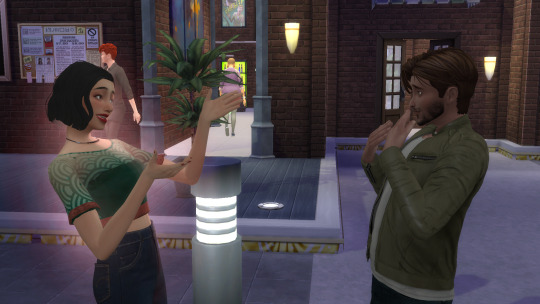
Except outside the karaoke bar in the Spice District, Tamar met a dark haired guy named, Seiji Yoshida. She wasn't sure if the sakura tea was amplifying the attraction, so she got his number and hoped she'd still feel a connection in the morning.
20 notes
·
View notes
Photo

'La Vie' [meaning 'Life' in English or 命 (Inochi) in Japanese], a 1984 metals and oils on canvas painting, by Yoshida Kenji (24 May 1924 - 24 February 2009), a Japanese abstract artist who was born in Ikeda City (池田市), part of present day Osaka Prefecture (大阪府).
Known as the "Artist of the Soul" or the "Artist of Light", after having taught art at elementary schools in Osaka and Tokyo for many years, in 1964 at the age of forty, he famously quit the teaching profession to go to Paris, France.
Yoshida worked out of his atelier in the Montparnasse district of Paris, and created many great works of art on the theme of “La Vie et La Paix”, or “Life and Peace”, thereby becoming one of the most prominent artists of his generation.
He was a prolific artist until his death in 2009 at the age of 84.
[Jaded in Japan]
* * *
The experiences of the six realms
~ Chögyam Trungpa
And strangely enough, these experiences of the six realms - gods, jealous gods, human beings, animals, hungry ghosts, and hell - are ‘space’, different versions of space. It seems intense and solid, but in actual fact it isn’t at all. They are different aspects of space - that’s the exciting or interesting part. In fact, it is complete open space, without any colors or any particularly solid way of relating. That is why they have been described as six types of consciousness. It is pure consciousness rather than a solid situation - it almost could be called unconsciousness rather than even consciousness. The development of ego operates completely at the unconscious level, from one unconscious level to another unconscious level. That is why these levels are referred to as loka, which means 'realm’ or 'world’. They are six types of 'world’. Each is a complete unit of its own. In order to have a world, you have to have an atmosphere; you have to have space to formulate things. So the six realms are the fundamental space through which any bardo experience operates. Because of that, it is possible to transmute these spaces into six types of awakened state, or freedom.
– Chögyam Trungpa
from the book “The Collected Works of Chogyam Trungpa,
Volume 6”
[via alive on all channels]
#La Vie#Jaded in Japan#Yoshida kenji#about art#quotes#Chogyam Trungpa#the six realms#ghosts#aspects of space#loka#realm#world#Alive On All Channels
53 notes
·
View notes
Text
'70s Harajuku (Part 2)
The Harajuku district in Shibuya has gained international acclaim as a hub of Tokyo's youth culture and fashion scene. Its streets are lined with cafes, boutiques, and well-known fast fashion stores, drawing a constant stream of tourists, fashionistas, and teenagers. However, before the arrival of billionaire retailers, foreigners, and media attention, this area's early inhabitants were the ones who truly shaped its unique character.
'70s Harajuku (Part 1)
There's been a few books written about Harajuku and its culture in the '70s. Famed photographer Shinpei Asai wrote "Central Apartments Monogatari" (Central Apartments Tale), published in 2002. Futoshi Kimizuka interviewed some creative professionals who had offices in the building for 2004's "Central Apartments no asobi" (Walking through Central Apartments). Yasuko Takahashi, Japan's first stylist, wrote extensively about her experience working and playing in the neighborhood during that era in "Omotesando no Yakko-san" (Yakko-san from Omotesando, 2012) and "Toki no kakeru Yakko-san" (Yakko-san Who Leapt Through Time, 2015). In 2019, Non Nakamura, who started out as Yakko-san's assistant, compiled photographs and essays from influential figures of the time in "70s Harajuku Genfuukei."
This same Non Nakamura contributed what I consider to be some of the most insightful and readily available essays on this period through her "20th Century Girl" serialization in Mononcle. These essays are accessible for free on their website (in Japanese, though Google Translate provides a decent translation). Nakamura's series chronicles the culture of the 1970s in Harajuku and the broader oshare influences of that decade.
The first essay discusses how she owes her fateful meeting with Yakko-san to rock 'n' roll. Nakamura was a teen during the folk music era when rockstars had long hair, worn-out T-shirts, and bell-bottom denim. She wasn't particularly attracted to this type of fashion, so when she first saw glamorous-looking David Bowie in a magazine, she instantly fell in love with him. Her other passion was the band Carols. She passed by a poster of them, with their regent hairstyles, motorcycles, and leather jackets, on her way to her part-time job in Shinjuku and was remarkably attracted to them. After work, she ran to the record store and bought their then-just-released first single, "Louisiana." When she got home and dropped the needle on the record, the sound of rock 'n' roll took over her body, and she was utterly fascinated with the band. Soon after, she got a boyfriend who followed the regent hairstyle/leather jacket/motorcycle trend of the time.
Nakamura hated studying and wasn't interested in school clubs and activities. She'd fulfill her curiosity about the world by reading the dressmaking magazine Fukusou and admiring the avant-garde professionals that worked in it, such as the photographers (Saku Sawatari, Daitomo Yoshida, Osamu Nagahama), the illustrators (Ayumu Ohashi, Teruhiko Yumura, Yosuke Kawamura, Osamu Harada, Tamie Okumura), the models (Risa Akigawa, Brenda, Ichizo Koizumi), and the writers (Takeshi Matsuyama and Ken Sunayama).
One day, Yasuko Takahashi, aka Yakko-san, started a serialization in Fukusou. In her inaugural essay, she wrote that if she were a teen, she'd probably be chasing her rock 'n' roll dreams and dating a rocker dude her mom disapproved of. These words resonated deeply with Nakamura, who found school tiresome, yearned for an artsy and glamorous world, adored Carol and Bowie, and was dating a delinquent high school dropout who didn't earn her mother's favor. She felt seen and understood.
In her column, Yakko-san published plenty of photos of her daily life. To Nakamura's surprise, she was friends with the guys from Carol and also worked as a stylist for David Bowie. In the 17-year-old girl's eyes, she was the most incredible woman alive.
As she recounts in her second essay, her deep relationship with the Fukuso magazine team started a few months before Yakko-san's inaugural column in the October '73 issue. One day during the spring of her senior year, she felt compelled to write a letter to the magazine professing her love for it. She dreamed of being an illustrator, so she included a bunch of her doodles. To her surprise, the editorial team called her home a few months later and invited her to their office.
After school, she changed from her uniform to her favorite clothes (which included a shirt she bought from a London import shop in the basement of Central Apartments and a gingham skirt she made inspired by MiLK) and eagerly made her way to the meeting. The editors inquired about her clothing and life, and their comment, "I sensed something in you that was not Yojohan-ish," stuck with her.
To understand the context of this comment, we must go back in time to the folk music fever of the '70s, when yojohan (4 tatamis and a mat) folk was at its peak. Yojohan referred to small rooms where impoverished university students lived, often idealized in songs about young love and melancholy that dominated the charts. Nakamura was happy with the comment because, indeed, she didn't like the poor and humid vibe of said songs. She was drawn instead to dreamy pop and rock.
The teen girl left the magazine's office that day with an invite to publish a double-spread page in the June issue, full of her illustrations and thoughts. It was quite an achievement for her.
Encouraged by this experience, she didn't hesitate to write Yakklp-san a letter. And to her astonishment, Yakko-san replied! Before she knew it, they had become penpals and engaged in lengthy phone conversations. Thus began a profound friendship between a 17-year-old high school student and a 34-year-old stylist at the pinnacle of her career.
Funnily enough, Yakko-san feared meeting Nakamura and disappointing her. To the 17-year-old, it was amusing that a grown woman who organized Japan's top designer Kansai Yamamoto's show in London Fashion Week and had the initiative to collaborate with world-famous figures such as T-Rex and David Bowie would be intimidated by her.
But, as she recounts in her third essay, they finally met. First, a quick 10-minute meeting in a Shibuya coffee shop. And then a proper encounter at the renowned Leon, where she also met other cool people she used to see in the magazines. Soon after, she became a frequent visitor to Yakko-san's small apartment in Harajuku.
Initially, she was taken aback by the apartment's minimalist and compact layout, as well as Yakko's sparse possessions. Yet, within the broader context, it made sense that a trend-savvy individual in 1973 lived this way. It was the year of the Oil Shock, the first post-war recession and frugality was in vogue. Books like "Jonathan Livingston Seagull," an anti-materialism allegory, and Alicia Bay Laurel's "Back to the Earth" became bestsellers, reflecting the shift towards a more modest lifestyle.
Amid the growing popularity of the back-to-the-land movement in the United States, minimalism and healthy living gained global momentum. It was Yakko-san who first introduced Nakamura to these ideas.
Through Yakko, Nakamura also learned about "natural food," a relatively unfamiliar concept in Japan at the time. While a foreign concept to most, natural food was all the rage in the vibrant neighborhood of Harajuku, and locals bought it from the market in the basement of the luxury Co-Op Olympia condo. Additionally, a delivery service offered pesticide-free vegetables, spearheaded by a former Leon patron who had forsaken a successful creative career to explore his passion for sustainable farming. Through these encounters, young Nakamura began to comprehend that life presented various paths, and fashion encompassed not only clothing but also a holistic lifestyle, including food and living habits.
The fourth installment focuses on Sayoko Yamaguchi, one of Japan's top models of the '70s, who had worldwide success and shared a close relationship with Yakko-san. Nakamura observed that during that era, the most prominent models were of mixed heritage (haafus), characterized by big eyes, long eyelashes, and wavy hair. Notably, Lisa Akigawa was one of the most renowned among them. In contrast, Yamaguchi stood apart with her almond-shaped eyes and black bob haircut. Her unique style served as an inspiration for many Japanese girls, fostering their self-confidence. Her signature eyeliner makeup and haircut were emulated by numerous admirers. While Yamaguchi enjoyed global fame at international fashion weeks, she became a familiar face to the Japanese public through her Shiseido commercials. She was among the numerous icons in fashion and culture closely connected to Yakko-san.

During the 1970s, Sayoko Yamaguchi was one of the faces of Shiseido cosmetics.
Another notable figure in this circle was the director Juzo Itami, whose tight relationship with Yakko-san was evident in his introduction to her first book, "Aisatsu no Nai no Nagadenwa" (Long Phone Conversation with no Greeting), published in 1976. This title offered one of the first comprehensive examinations of the "stylist" profession, which was relatively obscure in Japan then.
In the fifth essay, Nakamura writes how she found out about the profession through an article at AnAn, which briefly described a stylist as "people who lease clothes for fashion shoots, run around Harajuku with large bags, line the soles of model's shoes with duct tape, coordinate clothes, and attend shoots."
As she discovered through her work with Yakko-san, stylists do way more than that. And that was also what Itami tried to convey in the introduction to Yakko's book:
"I want to introduce my friend, Yasuko Takahashi. She is a first-class stylist. When making fashion editorials or commercials, a stylist can materialize a suitable house, the right interior design, or a place just like the one you're looking for out of thin air. At the same time, they also find props that are suitable for the location and source costumes. Depending on the situation, they will interact with the models and even advise on hair and make-up, so they must be genuinely knowledgeable. Collaborating with Yakko is, without exaggeration, a heavenly experience for me. She is a consummate professional. Once upon a time, when she couldn't find a suitable location, she wandered through town all night, shedding tears of frustration until she eventually discovered one. I mean, she's persistent. Her tenacity isn't limited to her professional life; in her case, she's unwavering in allowing her creativity to roam freely."
Yakko and Itami first met after being introduced by famed photographer Shinpei Asai, who had his office at Harajuku Central Apartments. The three of them worked together on a serialization Itami had at Shūkan Bunshun magazine in the sixties, which had Asai in charge of the photography and Takahashi doing the styling.
Takahashi was impressed by Itami's sensitivity to trends on a global scale. When she went to New York, he told her to buy a Yellow Pages-sized book, "Whole Earth Catalog," which inspired his weekly column. As covered here, "Whole Earth Catalog" was highly influential among Japanese media and creative types in the late 60s and early 70s, molding much of Japan's fashion culture.
But back to Non Nakamura's column, stylist was a novel occupation. She notes that stylists became highly sought after in the 80s, with the effects of the D.C. brand boom and the bubble economy. A diverse range of stylist roles emerged, including magazine stylists, advertising stylists, men's fashion stylists, and even specialists in props and food styling, each requiring unique skills and expertise. But back then, when Yakko-san was one of the few professionals doing this job, a stylist was in charge of everything, from the models and shooting locations to the costumes, dishes, houseplants, furniture, or anything else the shoot may need.
One day, Yakko asked Non to work as her assistant on a Noriyaki Yokosuka shoot. She promptly accepted, even though she had no idea who the photographer was. However, when she mentioned him to the boys in her design school, they were impressed and told her that he was the one who photographed Sayoko Yamaguchi's Shiseido posters, as well as doing the Parco ads. Parco, the Shibuya fashion building, had the buzziest campaigns in the country under Eiko Ishioka's art direction.
When she got to the shoot, the photographer asked her to get some poppy flowers. Faced with challenges in finding these specific flowers, Non embarked on a frantic quest, purchasing as many as she could to meet the photographer's expectations. However, to her astonishment, the photographer didn't even glance at the flowers. That's when she realized that being a stylist was a tough job.
David Bowie was the theme of two installments of the column. Yakko-san introduced him to legendary Japanese designer Kansai Yamamoto, who was behind some of his most legendary costumes, and they established a close working relationship in the 1970s. During her tenure as Yakko's assistant, Non had the opportunity to meet Bowie in a 1977 photoshoot in Harajuku. One of the photographs from that session, captured by Masayoshi Sukita, ultimately was used as the cover of Bowie's 12th studio album, "Heroes."

The cover of Bowie's 12th studio album, "Heroes," was shot in Harajuku. Yakko-san was the stylist.
She also dedicated a chapter to another one of her idols, Eikichi Yazawa, whom she met just a few weeks after Carol's farewell concert as he prepared to make his solo debut. She recounts that his charm so enchanted her that she realized she didn't actually love her boyfriend at the time, breaking up with him shortly after.
Nakamura watched Carol's final concert twice. Along with the rest of the country, she followed the telecast, aired a few days later. As she recounts, she and Yakko-san were working in Harajuku on a Saturday afternoon when the stylist took a look at her watch, said, "oh, it's starting soon," and rushed to a design office at Central Apartment that had a TV (minimalist Yakko-san didn't have one at her place).
But she also was one of the lucky few who actually were at the proper concert in Hibya Open Air, which she attended all dressed up in clothes from the trendy Creamy Soda boutique in Harajuku (the owner was notoriously close to Carol's members). Infected by the feral atmosphere, she ended up in the front row and even tried to invade the stage. She succeeded in getting her right foot in before being kicked out by the security guard. But here's a twist: the security was also a regular at Harajuku's Leon coffee shop.
In the 1970s, the hippiest motorcycling gang in Tokyo was The Cools. They were known for their cool styles, hung out with models and celebrities, and were always at Leon. Of course, like all of Japan's young bad boys, they were also big Carol fans. And they actually became close to the members. For their final show, the band wanted to mimic the Rolling Stones -- which had the Hell's Angels as security -- and they invited The Cools to escort them and guard the stage.
After Carols disbanded, the Cools were actually hired by a major record label and became a proper rock band.
In the 1970s, Harajuku remained a hidden gem, undiscovered by the masses. Yet, this small district nestled within bustling Shibuya played an integral role in the histories of the most extraordinary individuals. As the rest of the country caught on, they sought a taste of Harajuku's uniqueness, propelling it into the phenomenon it has become today.
#carol#the cools#70s japan#70s japanese music#harajuku#70s harajuku#non nakamura#sayoko yamaguchi#david bowie
6 notes
·
View notes
Photo

Yoshida, Sakyo district, Kyoto city, Japan, 2023.
4 notes
·
View notes
Text
The Demon Girl Next Door Review

On July 1st, this supernatural slice-of-life comedy anime directed by Hiroaki Sakurai came to an end. This series, which recently concluded, is based on an ongoing six volume manga series by Izumo Itō of the same name.
Reprinted from Pop Culture Maniacs, my History Hermann WordPress blog on Feb. 7, 2023, and Wayback Machine. This was the twelfth article I wrote for Pop Culture Maniacs. This post was originally published on July 18, 2022. This article was originally supposed to be published on The Geekiary, but they rejected it, saying it was too similar to my previous review.
The Demon Girl Next Door tells the story of a demon girl, and her two magical girl companions, as they learn more about themselves and face unexpected challenges.
The last six episodes of this anime continue with the same levity as the first nineteen episodes, with continued comedic moments, especially when it comes to the relations between Shamiko (Konomi Kohara), also known as Yuko Yoshida, and two magical girls.
The latter have their own internal problems. Mikan Hinatsuki (Tomoyo Takayanagi) has a curse that causes others to experience calamities when she gets flustered. Momo Chiyoda (Akari Kitō) is on the precipice between the powers of light and dark.
Although Shamiko is similar to the protagonist of The Great Jahy Will Not Be Defeated!, Jahy, in that she lives in a run-down apartment, she isn't alone in this. Mikan and Momo move in next door, and they all live in the same apartment complex. None of them are well-off.
Shamiko also gains a support network, of sorts, apart from help the magical girls give her. She has school friends like Anri Sata (Sayaka Senbongi) and Sion Ogura (Ayaka Suwa). The latter is a lover of the occult. She is able to conjure up recipes to help Momo, especially to stop her from slipping to the dark side. Notes left behind by Sakura Chiyoda (Hisako Kanemoto), the elder adopted sister of Momo, and magical girl, who gave her energy to keep Shamiko alive, assist her in this endeavor.
In another similarity with Jahy, Shamiko works in a part time job. Unlike that series, in The Demon Girl Next Door the bar is staffed by two magical beings: a demon tapir named Shirosawa, and a Hula jing fox named Lico.
As it turns out, Shirosawa (Takashi Matsuyama), who runs the coffee shop. He even created the mascot of the shopping district when the cat form of Sakura inspired him. As for Lico (Ayasa Itō), she is a waitress at the shop and she often uses magical leaves to bewitch people who eat the food that she makes. This includes, at one point, Shamiko.
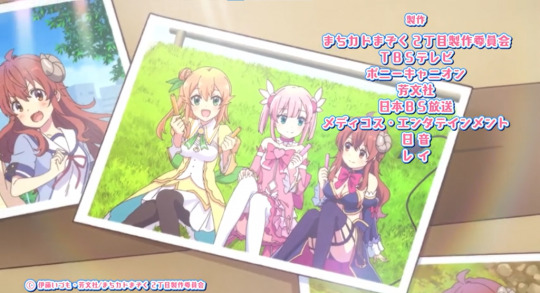
Similar to other series in Western animation, like Amphibia, The Owl House, Steven Universe, gen:LOCK, and Inside Job, memories, manipulation, and mindscapes are an important part of this series.
Part of this is shown in the fact that Lilith (Minami Takahashi), an ancestor of Shamiko, can appear in the dreams of Shamiko. She can even take over Shamiko's body if a switch is flipped on her statue.
Lilith often guides Shamiko and Momo, especially when they enter mindscapes. However, she can only be connected to such mindscapes for a short period of time, and her connection can get fuzzy at times.
Then, there's times when Shirosawa has psychedelic hallucinations caused by eating Lico's food. The same is the case for Shamiko.
In one episode, Shamiko and Ryo go into Lilith's dreamspace, discovering she has a lot of manifestations of her loneliness there. Ultimately, she ends up defeating them all by changing her magic rod into stuff from video games she likes.
The final episodes of the series focus on Momo and Shamiko going into the heart of Mikan, with help from Lilith. They vow to tell the protective demon inside Mikan, Ugullu (Fairouz Ai) to calm down and end her curse once and for all. They are able to successfully negotiate with Ugullu and get her to realize the damage she is causing.
In a nice end to the series, Mikan's school friends help her out, by coming late one night to summon Ugullu into a new body, and a dish made at the cafe Shamiko works at. Ugullu comes into a new form and Mikan accepts her as part of her family.
In a post-credit scene, Ugullu clear has found her place, coming to terms with her new identity outside of Mikan, no longer tasked with defending Mikan from evil.
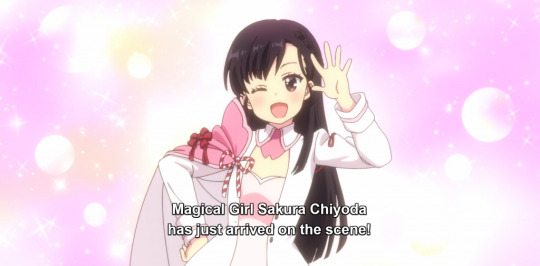
Like any other magical girl, or magical boy, series, magical transformations are a big part of the series. Similar to the aforementioned The Great Jahy, the magical girls and the demons can both transform. Shamiko can transform into the "crisis management form" which gives her some additional powers. In contrast, Momo and Mikan have their own specific magical girl forms.
At other points, Shamiko's sister Ryoko "Ryo" Yoshida (Hitomi Ōwada) helps create weapons with her magic rod. She realizes that Shamiko's subconscious is holding her back and helps her get over her mental hurdles. This is in-keeping with the series playing off many common elements of magical girls in anime and manga.
Unlike Mikan, Momo has a dark form which is known as "Darkness Peach". She occasionally transforms into this form when she is teetering on the edge of dark and light. At one point, she struggles to keep the two separated, but Shamiko helps her, as does Sion.
At another point, Shamiko tries to develop a special attack and inherits a wand from her father which can transform into anything she wants. She is helped in this task by Shamiko, and in coming up with a super special move. Both seem to have some feelings for each other.
There is also talk in the series as to how magical girls are ordinary girls who make a pact with the light clan, with demons getting a token for each magical girl they defeat. All the while, Shamiko often utters her line "don't think this means you've won". In a funny reference to this line, Momo says it at one point, almost becoming an in-joke of sorts.
Even worse is the fact that Momo's "Darkness Peach" form can break anything she touches. It turns out that when she is happy and content, the balance between the dark and light sides can come to a balance. She even goes to a hot healing spring said to be of therapeutic value, but it turns out to be a healing waterfall. What she finds there is turned into an elixir by Sion, which ends up helping her later on.
Related to this are the magic barriers put on doors, either with magic by Momo, Mikan, or Shamiko. Hilariously, these barriers are just weak pieces of paper, but apparently have all sorts of magical power.
In the final scene of the series, Ugullu declares that Shamiko is the boss of Momo, who is overjoyed. It ends with Momo teasing Shamiko, as they both walk off into the distance.
youtube
Since The Demon Girl Next Door is based on a manga parody series, it is no surprise that the series doesn't really take itself too seriously. The characters are never in series danger. Instead there are occasional breaks in the fourth wall. There's even a hilarious shirt worn by Lilith on multiple occasions which says "my blood sugar level is dangerous".
At other points there are faulty recaps which don't make sense and fun interplay between Momo and Shamiko. This involves Momo trying to motivate Shamiko to do homework and the fact that Momo wants to see a baby tiger at the zoo.
Also comedic is Momo's reaction when she drinks disgusting potions from Sion. At others, the characters are saying that they don't have many lines of dialogue or when Lilith tries to send a picture of herself into the camera but it doesn't work.
Its also funny how Mikan, who lives alone, is afraid of cockroaches even though she is an all-powerful magical girl. Shamiko helps her, even assisting in cleaning up her trash. It is a bit amazing that Shamiko, who has only known Momo for a few months, is able to help Mikan more than Momo, who has been a friend of Mikan for 10 years.
In some ways, Mikan is socially awkward. In the show's next to last episode, she worries about her school introduction as a transfer student. It ends up going well, however, with Anri helping her. She ropes in Momo to help with prepare with sports day preparations.
Family is an important theme in The Demon Girl Next Door too. Shamiko has a tight family, with a loving sister, Ryo, and mother, Seiko Yoshida (Sayaka Ohara). She has a smile on her face, no matter how absurd the situation is. In an interesting twist, Joshua (Hideyuki Umezu), the father of Ryo and Shamiko, was sealed in a cardboard box by Sakura, the same box they eat many meals on!
Family is important to Momo too. She deals with the past actions of her sister and tries to figure out why she did what she did. She and Mikan find a chosen family among Shamiko, her family, and many school friends.
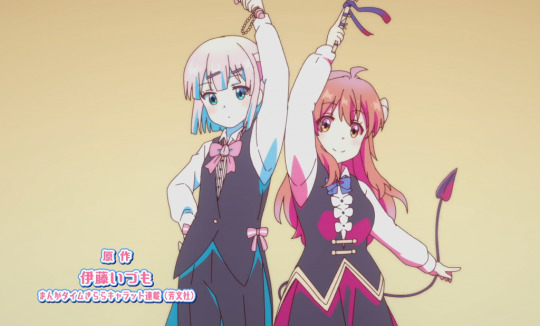
While some have argued that the series is a "mid-tier offering" with animators told to not "overtax their assets", the series has a certain charm to it. This is due to the fact that J.C. Staff, responsible for recently ended The Executioner and Her Way of Life, and series such as Edens Zero, Sweet Blue Flowers, R.O.D.-The TV, Azumanga Daioh, and Revolutionary Girl Utena, animated this series. While the animation of this series does not have the same quality as the aforementioned series, it still fits with the slice-of-life vibe.
The show's voice actors have voiced characters in series ranging from Bloom Into You to Akebi's Sailor Uniform. Many of these series, and others, like Adachi and Shimamura, Asteroid in Love, Kageki Shojo!!, have direct and indirect yuri themes.
Others are about socially awkward characters, like Hitori Bocchi no Marumaru Seikatsu and Komi Can't Communicate. This undoubtedly set the groundwork for their voice acting in this series. The same can be said for those who voiced characters in slice-of-life series like Chronicles of the Going Home Club, Kin-iro Mosaic, Gabriel DropOut, and Let's Make a Mug Too.
I loved that some of the voice actors in this series voiced characters in Bodacious Space Pirates. The latter is a niche sci-fi adventure anime which has two supporting characters (Lynn Lambretta and Jenny Dolittle) in a romantic relationship.
The series director, Hiroaki Sakurai, is just as talented. He is known for directing comedies like Kodocha, Di Gi Charat, Di Gi Charat Nyo!, and Nanaka 6/17. He also directed a ninja anime, Jubei-chan: The Ninja Girl, and a magical girl parody, Majokko Tsukune-chan. This directing experience, and that of other series, undoubtedly had a positive impact on The Demon Girl Next Door.
While the final episode of the series is a fitting season end, there is a possibility for continuation. A third season could be focused on the continued adventures of Mikan, Momo, and Shamiko. Another season would continue to be slice of life, with a continued focus on trying to make the town a place that's easy for everyone to live in as the narrator says at the end.
Perhaps even Momo and Shamiko could be shown as more than ambiguously together. They could be even closer like the protagonists of Miss Kobayashi's Dragon Maid, Kobayashi and Tohru. It could be more than "shipping fodder" between them then, with often fanservicey outfits of Momo, Shamiko, and other characters. This series does not have any explicit queer representation, just heavy subtext.
In the end, while The Demon Girl Next Door is not my favorite anime series that I've watched this year, it is still a must-see for those interested in magical girls, demons, supernatural themes, and yuri subtext.
The Demon Girl Next Door can be watched on HIDIVE.
© 2022-2023 Burkely Hermann. All rights reserved.
#the demon girl next door#yuri#anime#manga#lgbtq#reviews#pop culture#magical girls#the great jahy will not be defeated#magical transformation#hidive#miss kobayashi's dragon maid#fan service#Youtube
3 notes
·
View notes
Text
Yuki-onna
Yuki-onna ("snow woman") is a spirit or yōkai in Japanese folklore. She may also go by such names as yuki-musume ("snow daughter"), yuki-onago ("snow girl"), yukijorō ("snow woman"), yuki anesa ("snow sis'"), yuki-onba ("snow granny" or "snow nanny"), yukinba ("snow hag") in Ehime, yukifuri-baba ("snowfall hag") in Nagano. They are also called several names that are related to icicles, such as tsurara-onna, kanekori-musume, and shigama-nyōbō.
Yuki-onna originates from folklores of olden times; in the Muromachi period Sōgi Shokoku Monogatari by the renga poet Sōgi, there is a statement on how he saw a yuki-onna when he was staying in Echigo Province (now Niigata Prefecture), indicating that the legends already existed in the Muromachi period.
In legends from the Ojiya region of Niigata Prefecture, a beautiful woman came to visit a man and became his wife from the woman's own desire. This woman was reluctant to go into the bath and when she was made to go in anyway, she disappeared, leaving only thin, fragmented, floating icicles (see also tsurara-onna).
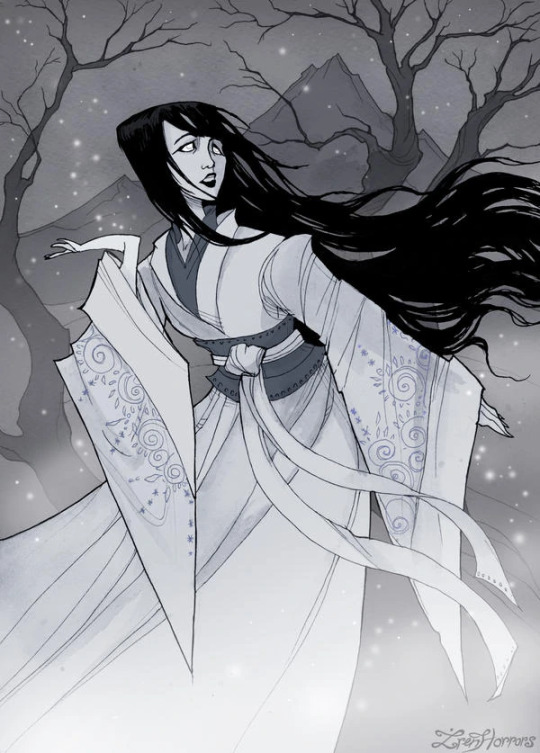
Pic by Irenhorrors
In the Aomori and Yamagata Prefectures, there is a similar story about one called the "Shigama-onna." In the Kaminoyama region of Yamagata, a yuki-onna would come visit an old couple on a snowy night to warm herself by the irori. When late at night the Yuki-onna would again go out on a journey, the old man would attempt to take her hand to stop her, when he noticed that she was chillingly cold. Then, before his eyes, the girl turned into a whirl of snow that exited the house through the chimney. Also, it has some points of similarity with the kokakuchō; and on the night of a blizzard, as the Yuki-onna would be standing there hugging a child (yukinko), it would ask people passing by to hug the child as well. When one hugs the child, the child would become heavier and heavier until one would become covered with snow and freeze to death. It has also been told that if one refuses, one would be shoved down into a snowy valley.
In Hirosaki in Aomori, it is said that there was a warrior (bushi) who was asked by a yuki-onna to hug a child similarly, but the warrior held a short sword (tantō) by the mouth and hugged the child while making the blade go close to the child's head, which allowed the warrior to avoid the aforementioned phenomenon. When the warrior handed the child back to the Yuki-onna, the ghoul gave many treasures as thanks for hugging the child. It is also said that those who are able to withstand the ever-increasing weight of the yukinko and last all the way through would acquire great physical strength.
In the Ina region of Nagano Prefecture, Yuki-onna is called "yukionba", and it is believed that they would appear on a snowy night in the form of a yama-uba. Similarly, in Yoshida, Ehime Prefecture, on a night when snow is accumulating on the ground, a "yukinba" is said to appear, and people would make sure not to let their children outside. Also, in the Tōno region of Iwate Prefecture, and on Little New Year (koshōgatsu) or the 15th day of the first month, a yuki-onna would take many children along to a field to play, so children were warned against going outside. It can be thus seen that yuki-onna are often considered the same as the yama-uba, sharing the similarity that they are fecund and take many children along with them.
In the Ito region of Wakayama Prefecture, it is said that there would be a one-legged child jump-walking on a night when snow accumulates, and the next morning there would be round footprints remaining, and this would be called the "yukinbō" (snow child), but the one-legged snow kid is thought to be the servant of a mountain god.
In the village of Oshika, Tōhaku District, Tottori Prefecture (now Misasa), it has been said that a yuki-onna would come during light snow and say "Koori gose yu gose" ("Give me ice, give me hot water")—"gose" is a dialect word for "give me"—while waving around a white wand, and she would bulge when splashed with water and disappear when splashed with hot water.
In the area around the Kumano River in Yoshino District, Nara Prefecture, the "Oshiroi baa-san" or "oshiroi babaa" is also thought to be a type of Yuki-onna, and they are said to drag along mirrors, making clinking sounds while doing so. These characteristics, that of waving around a white wand (gohei) and possessing a mirror, are thought to be the characteristics of a miko who serves a mountain god that rules over birth and harvest.
In Aomori, it is said that a yuki-onna would come down to the village on the third day of Shōgatsu and return to the mountains on the first day of Rabbit, and it is thought that on years when the day of Rabbit is late in arriving, how well the harvest does will be different from before.
In the Iwate and the Miyagi Prefectures, a yuki-onna is thought to steal people's vitality; and in Niigata Prefecture, they are said to take the livers out of children and freeze people to death. In Nishimonai, Akita Prefecture, looking at a yuki-onna's face and exchanging words with her would result in being eaten. In Ibaraki Prefecture and in Iwaki Province, Fukushima Prefecture, it is said that if one does not answer when called by a yuki-onna, one would be shoved down into the bottom of a valley. In the Fukui Prefecture, they are called "koshi-musume" ("passing girl") and it is said that those who turn their backs to a koshi-musume when being called by one would get pushed into a valley.
In Ibigawa, Ibi District, Gifu Prefecture, an invisible monster called the "yukinobō" is said to change its appearance and appear as a yuki-onna. It is said that this monster would appear at mountain huts and ask for water, but if one grants the request, one would be killed, so one should give hot tea instead. It is said that in order to make the yukinbō go away, one should chant "Saki kuromoji ni ato bōshi, shimetsuke haitara, ikanaru mono mo, kanō mai" (meaning "A kurujo in front and a bōshi behind, by wearing these tight, nothing is possible").
The Hirosaki, Aomori legend about a yuki-onna returning to the human world on New Year's Day (Shōgatsu) and the legend in Tōno, Iwate Prefecture about yuki-onna taking away many children to play on "Little New Year" (koshōgatsu)- looking at the days on which they visit, both legends offer insight on how the yuki-onna has some characteristics of a toshigami. The story of how when one person treated a yuki-onna with kindness on a blizzard night, the yuki-onna turned into gold the next morning; illustrating how even in old tales such as the Ōtoshi no Kyaku, the yuki-onna has some relation to the characteristics of a toshigami.
Yuki-onna often appear while taking along children. This is in common with another yōkai that takes along children, the ubume. In the Mogami District, Yamagata Prefecture, ubume are said to be yuki-onna.
They often appear in stories about inter-species marriage, and stories similar to Lafcadio Hearn's Yuki-onna where a mountain hunter gets together with a woman who stays the night as a guest and eventually births a child. One day the man carelessly talks about the taboo of getting together with a yuki-onna, resulting in the woman revealing herself to be a yuki-onna, but not killing the man due to having a child between them and warning, "If anything happens to the child, you won't get away with it" before going away. These stories can be found in Niigata Prefecture, Toyama Prefecture, and the Nagano Prefecture, which came about as a result of many stories about mountain people where those who break the mountain taboos would be killed by mountain spirits. There is also the hypothesis that the yuki-onna legend was born from a mixture of paranormal stories of mountain people and the paranormal yuki-onna stories.
Old tales about yuki-onna are mostly stories of sorrow, and it is said that these tales started from when people who have lived gloomy lives, such as childless old couples or single men in mountain villages, would hear the sound of a blizzard knocking on their shutter door and fantasize that the thing that they longed for has come. It is said that after that, they would live in happiness with what they longed for in a fantasy as fleeting as snow. There is also a feeling of fear, and like as in the Tōno Monogatari, the sound of a blizzard knocking on an outer shōji is called the "shōji sasuri" (rubbing a shōji), and there is a custom of making children who stayed up late go to sleep quickly when a yuki-onna rubs a shōji. From real sayings such as the shōji sasuri, it is said that things that one longs for sit back-to-back with fear. Also, winter is the season when gods would come to visit, and if one does not pay respects, terrible things will happen, so even if it is said to be things that one longs for, one cannot put too much trust in that. In any case, it can be said to be related to the coming and going of seasons. Nobuyoshi Furuhashi, scholar of Japanese literature, stated that the novel Kaze no Matasaburō is also probably somehow related.
There are various legends about the yuki-onna's true identity, such as a snow spirit or the spirit of a woman who fell over in the snow. In a setsuwa of the Oguni region of Yamagata Prefecture, a yuki-jorō (yuki-onna) was originally a princess of the moon world, and in order to leave a boring lifestyle came down to earth together with snow but was unable to go back to the moon and so appears on snowy moonlit nights.
Yamaoka Genrin, an intellectual from the Edo period, said that yuki-onna is born from snow. It was supposed that if there were a lot of something, a living thing would come forth from it, giving birth to fish if the water is deep enough and birds if the forest is thick enough. Since both snow and women are "yin", so in places like Echigo it is said that yuki-onna might be born from within deep snow.
Among Japan's traditional culture, Yuki-onna can be seen in kōwaka such as the Fushimi Tokiwa (伏見常磐), which can also be checked in modern times. In Chikamatsu Monzaemon's Yuki-onna Gomai Hagoita, the story is about how a woman who was deceived and murdered became a yuki-onna and took revenge as a vengeful ghost. The bewitching and frightening aspects of a yuki-onna are often used in such depictions. Old tales and legends like these have been confirmed in Aomori, Yamagata, Iwate, Fukushima, Niigata, Nagano, Wakayama, Ehime, among other places.
Yuki-onna appears on snowy nights as a tall, beautiful woman with long black hair and blue lips. Her inhumanly pale or even transparent skin makes her blend into the snowy landscape (as famously described in Lafcadio Hearn's Kwaidan: Stories and Studies of Strange Things). She often wears a white kimono, but other legends describe her as nude, with only her face and hair standing out against the snow. Despite her inhuman beauty, her eyes can strike terror into mortals. She floats across the snow, leaving no footprints (in fact, some tales say she has no feet, a feature of many Japanese ghosts), and she can transform into a cloud of mist or snow if threatened.
Some legends say the Yuki-onna, being associated with winter and snowstorms, is the spirit of someone who perished in the snow. She is at the same time beautiful and serene, yet ruthless in killing unsuspecting mortals. Until the 18th century, she was almost uniformly portrayed as evil. Today, however, stories often color her as mere human, emphasizing her ghost-like nature and ephemeral beauty.
In many stories, Yuki-onna appears to travelers trapped in snowstorms and uses her icy breath to leave them as frost-coated corpses. Other legends say she leads them astray so they simply die of exposure. Other times, she manifests holding a child. When a well-intentioned soul takes the "child" from her, they are frozen in place. Parents searching for lost children are particularly susceptible to this tactic. Other legends make Yuki-onna much more aggressive. In these stories, she often invades homes, blowing in the door with a gust of wind to kill residents in their sleep (some legends require her to be invited inside first).
What Yuki-onna is after varies from tale to tale. Sometimes she is simply satisfied to see a victim die. Other times, she is more vampiric, draining her victims' blood or "life force." She occasionally takes on a succubus-like manner, preying on weak-willed men to drain or freeze them through sex or a kiss.
Like the snow and winter weather she represents, Yuki-onna has a softer side. She sometimes lets would-be victims go for various reasons. In one popular Yuki-onna legend, for example, she sets a young boy free because of his beauty and age. She makes him promise never to speak of her, but later in life, he tells the story to his wife who reveals herself to be the snow woman. She reviles him for breaking his promise but spares him again, this time out of concern for their children (but if he dares mistreat their children, she will return with no mercy. Luckily for him, he is a loving father). In some versions, she chose not to kill him because he told her, which she did not treat as a broken promise (technically, Yuki-Onna herself is not a human and thus did not count). In a similar legend, Yuki-onna melts away once her husband discovers her true nature. However, she departs to the afterlife afterward the same way.
14 notes
·
View notes
Text

@watchmakr | JEALOUSY MEME

“HM, you really think so, Yoshida-chan?” ― Knobby knuckle met pointed chin & brow dented in DEEP CONTEMPLATION. She supposed it wasn’t unheard of. Many men & women had made passes at her over the years. (Often times said romantic interest flew right over her ignorant head). She could still recall the first time she’d visited the red-light district in downtown Shinjuku ― Middle-aged men had GRABBED & GROPED at her, offering her money for sex. But, this girl hadn’t been so blatant. She’d simply complimented Makoto’s attire & acquired her number in order to exchange fashion tips. Was she REALLY hitting on her? “She wasn’t particularly flirtatious. There was minimal physical contact. I think you might have read the room wrong. Why do you care so much, either way?” Smallest of smirks graced lips. She had a feeling she KNEW the answer to that question.
2 notes
·
View notes
Text

in a tucked away corner of a small district, one can find many shops and services open from the mid afternoon into the late night. one such place is a parlor, where the front doors feature eight men in extravagant costumes, and wonderful photos to show their appeal. one would and could easily mistake them for idols, and perhaps to some they are, but they would be wrong. a host club named ‘devil division’, most famously known for the males who worked inside, and the types of clients they would take on.
denji munches on his lunch, a glass of alcohol sat untouched beside him. he's not a big drinker, and it was a courtesy drink anyways, being one of 5 other hosts who would cater to men and women who wanted anyone to help fill their tables for the night. rarely was he ever called individually, but he doesn't mind making just enough to be able to support himself and cover his living expenses. it probably doesn't help he's on temporary suspension — ‘it's for your safety, denji-kun. you made that customer quite angry,’ ms. makima would tell him, her voice devoid of any disappointment yet denji felt it anyways.
he was currently chilling by himself when he felt a presence beside him; he doesn't bother to look up from his manga until he finished the page, amber eyes following the dark pressed pants up, up to the torso of a neatly pressed shirt and tie, up til they landed on a nearly familiar face. well, he's not that familiar; he's only been here for about two weeks when ms makima introduced him as the new security personnel. moreover, because of denji's fuck up, he was set up to be denji's personal bodyguard until things could be smoothed over.

denji finds yoshida's company to be a bit odd. ever since his appearance, hosts of the parlor have set up a challenge to get him to come spend money on them. it's a strange challenge, denji thinks to himself eyebrow raised at the other male who seemed to escape from the chaos of the main hall. he looks back to his manga, “yenno, i'm pretty sure i don't need ta be protected back 'ere. 't's just th' break room.” he says without looking up.

@smilemuse gets host! denji
#smilemuse#✦ ・ denji#✦ ・ in character#tfw i kinda wanted to toss makima at u too#i mean 👀👀👀#we can always plot that out too#hahuhe but here u go#i feel much better about this starter#even tho denji says 1 thing#lmk if i should change anything!
1 note
·
View note
Photo
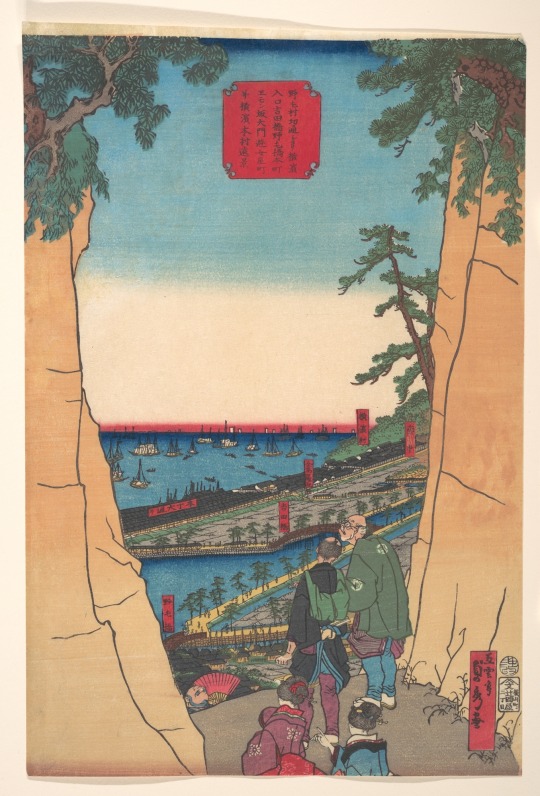
A Distant View of Yokohama Honmura, the Licensed District, Noge Bridge, and Yoshida Bridge, from the Entrance to Yokohama near the Mountain Pass at at Noge Village. 3rd month, 1860. Credit line: Bequest of William S. Lieberman, 2005 https://www.metmuseum.org/art/collection/search/73394
#aesthetic#art#abstract art#art museum#art history#The Metropolitan Museum of Art#museum#museum photography#museum aesthetic#dark academia
1 note
·
View note
Text
FUKUSHIMA'S NUCLEAR EXPLOSION
We have traveled along all the world and its history and this is our last stop. The Fukushima's nuclear explosion. As known Fukushima is a district of Japan. Inside this district we find a village called Ōkuma, which is now a phantom village because of this explosion.
The Fukushima nuclear disaster, which unfolded in 2011, represents one of the most significant nuclear catastrophes in recent history. Triggered by a massive earthquake and tsunami, it led to a series of meltdowns at the Fukushima Daiichi Nuclear Power Plant in Japan. The aftermath of this event had far-reaching consequences, not only for Japan but also for the global nuclear industry and the broader understanding of nuclear safety and preparedness.

Japan is situated in a seismically active region, making it susceptible to earthquakes and tsunamis. The disaster was rooted in the historical context of Japan's vulnerability to natural disasters. The magnitude 9.0 earthquake and the subsequent tsunami in March 2011 severely damaged the Fukushima Daiichi Nuclear Power Plant, leading to the failure of cooling systems and fuel rod meltdowns. This event rekindled discussions on the safety of nuclear power in earthquake-prone areas and raised concerns about the adequacy of safety measures.

The Fukushima disaster involved numerous key figures, including Prime Minister Naoto Kan, who played a central role in coordinating the government's response and later questioned Japan's reliance on nuclear energy. Masao Yoshida, the plant's manager, emerged as a hero for his efforts to control the crisis. The nuclear industry, regulators, and TEPCO (Tokyo Electric Power Company), which operated the plant, also came under scrutiny.
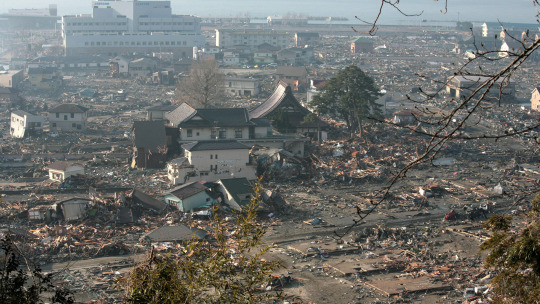
Water was of paramount importance in the Fukushima nuclear disaster. It served as a critical coolant for the damaged reactors, essential for preventing overheating and further fuel rod meltdowns. However, the extensive use of water resulted in a new challenge—massive quantities of contaminated water. The need to cool the reactors and mitigate the spread of radioactive materials necessitated the pumping of seawater into the reactors, leading to a significant buildup of radioactive water that had to be carefully managed and stored.

The Fukushima nuclear disaster had enduring consequences, both for Japan and the world. It led to a reevaluation of nuclear power's safety, particularly in regions prone to seismic activity. The event also highlighted the complex relationship between nuclear technology, natural disasters, and the role of water in cooling and decontaminating nuclear facilities. As the world faces ongoing challenges in energy production, nuclear safety, and disaster preparedness, the lessons from Fukushima continue to inform policy decisions, safety regulations, and disaster response strategies. The importance of water conservation and responsible water management practices emerged not only in the context of the disaster itself but also in the long-term efforts to mitigate the environmental impact of the radioactive water buildup at the Fukushima site.
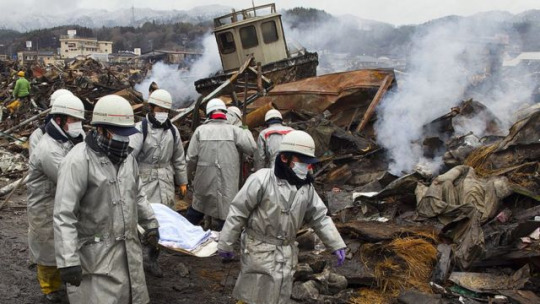
Bibliography
World Nuclear Association
Britannica
BBC
Aljazeera
0 notes